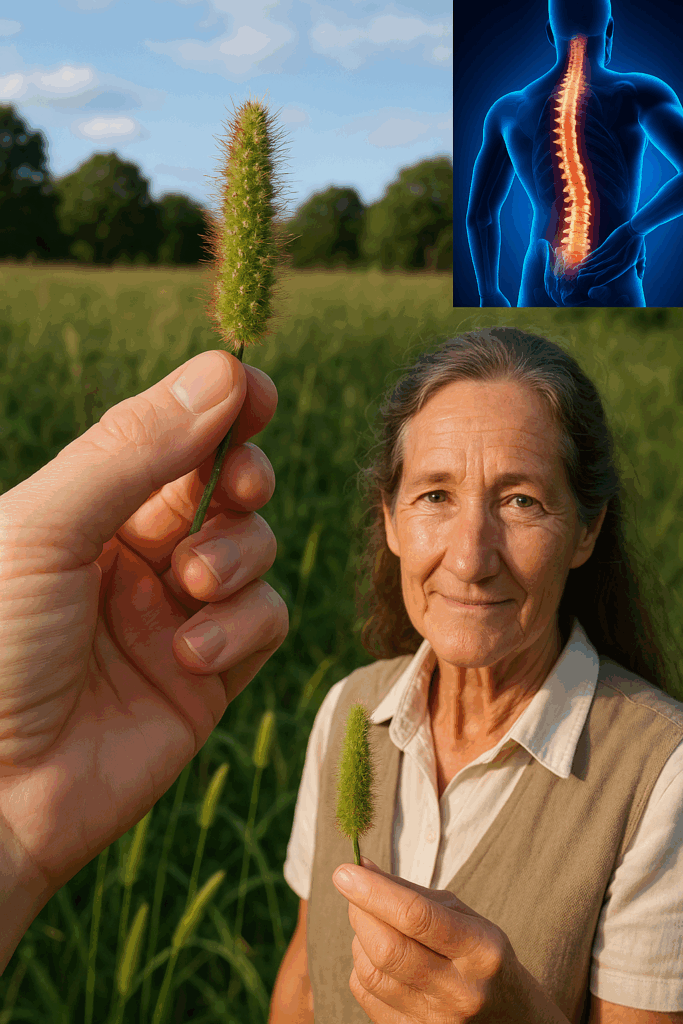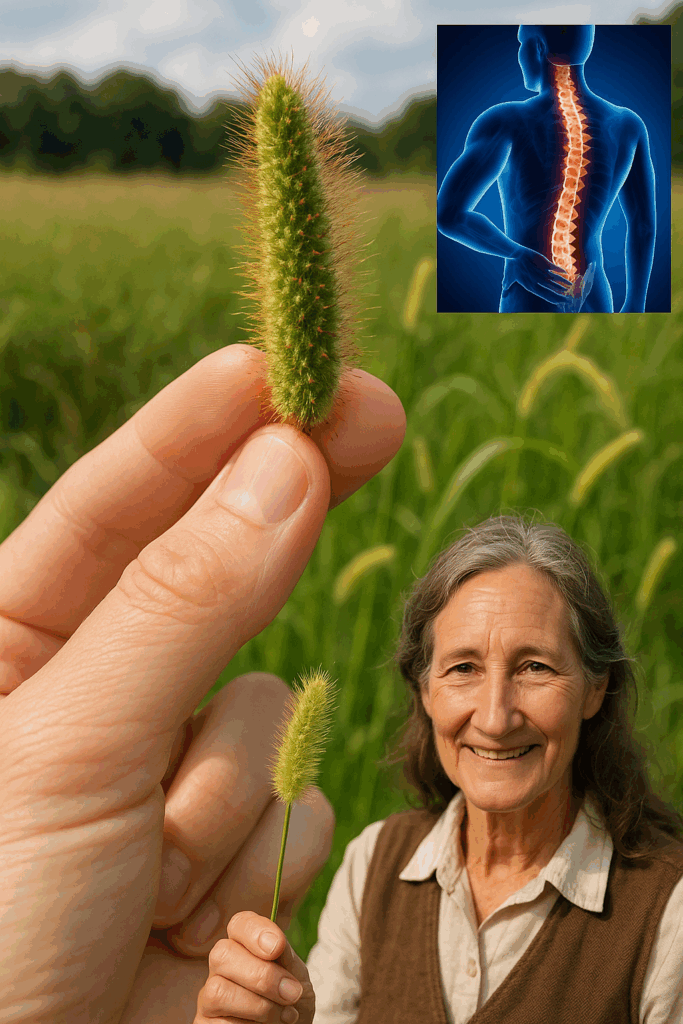🌾 What if that common weed in your backyard or along farm roads wasn’t just a nuisance—but a nutritional powerhouse, a natural medicine, and a tool for healing the land? Meet Foxtail Grass—specifically of the Setaria genus—a humble plant that’s quietly offering big benefits across health, agriculture, and ecology.
From managing blood sugar to protecting soil from erosion, foxtail grass is far more than a wild plant. Let’s explore its remarkable advantages and how this underestimated grass is making its way into health-conscious kitchens, livestock farms, and sustainable farming systems.

🍽️ Nutritional & Health Benefits of Foxtail Grass
🌾 1. A Superfood Seed: Foxtail Millet
The seeds of foxtail grass are harvested as foxtail millet, a small, yellow grain rich in:
- Carbohydrates for steady energy
- Plant-based proteins for muscle support
- Dietary fiber for digestive health
- Iron, magnesium, and phosphorus for vital cellular function and bone strength
Foxtail millet is gluten-free, making it a safe, nourishing alternative for people with celiac disease or gluten intolerance.
💩 2. Supports Digestive Wellness
Thanks to its high fiber content, foxtail millet helps:
- Regulate bowel movements
- Reduce constipation
- Feed healthy gut bacteria
- Ease bloating and support a healthy microbiome
👉 Add it to your diet as a porridge, side dish, or smoothie ingredient for a digestion-friendly boost.
💉 3. Helps Manage Blood Sugar
Foxtail millet has a low glycemic index, meaning it digests slowly and avoids rapid spikes in blood sugar. This makes it ideal for:
- People with diabetes
- Those following a low-GI diet
- Anyone looking to stabilize energy levels throughout the day
❤️ 4. Promotes Heart Health
Foxtail grass seeds contain:
- Magnesium and potassium to balance blood pressure
- Soluble fiber to lower LDL (“bad”) cholesterol
- Iron and antioxidants to support healthy blood flow
This makes foxtail millet a smart choice for heart-conscious individuals.
🔥 5. Natural Anti-inflammatory Effects
Traditional medicine has used foxtail grass to ease:
- Arthritic pain
- Joint stiffness
- Swelling and muscle inflammation
While more clinical studies are needed, its anti-inflammatory reputation in herbal traditions is promising.
🐄 Agricultural and Environmental Advantages
🐑 1. Excellent Livestock Fodder
Foxtail grass is a nutritious, easily digestible forage for:
- Cows
- Goats
- Sheep
It supports livestock health while being simple and affordable for farmers to cultivate.
🌱 2. Soil Erosion Control
The dense root structure of foxtail grass anchors soil effectively, preventing erosion from wind or water—especially in sloped or drought-prone areas.
🌾 3. Natural Cover Crop
Used in sustainable agriculture, foxtail grass works as a green manure and cover crop:
- Preserves soil moisture
- Adds organic matter to the soil
- Enhances biodiversity
- Suppresses weeds between main crop cycles
🍛 Culinary Uses of Foxtail Millet
Foxtail millet is a culinary staple in parts of Asia and Africa and is now making its way into global health food markets. You can enjoy it in:
- Warm porridges for breakfast
- Wholesome pilafs or rice substitutes
- Gluten-free flatbreads
- Energy-boosting snack bars or baked goods
🥄 How to Cook Foxtail Millet:
- Rinse well to remove dust or debris
- Boil 1 part millet to 2.5 parts water
- Simmer for 15–20 minutes until tender
🌿 Other Valuable Uses
🩺 Traditional Medicine
In some cultures, foxtail grass has been used as a natural remedy for:
- Fevers
- Respiratory congestion
- Skin irritations and infections
Note: These uses are largely anecdotal, and modern clinical validation is limited. Always consult a health professional before use for medicinal purposes.
🐦 Supports Wildlife Habitats
Foxtail grass provides:
- Food for birds (they feed on the seeds)
- Shelter for small mammals and insects
- Breeding cover for ground-dwelling species
Its presence contributes to local biodiversity and ecosystem balance.

⚠️ Important Precautions
While foxtail grass offers benefits, it does come with some cautions—especially for pet owners:
- Barbed seeds from certain foxtail species can attach to a dog or cat’s fur
- If lodged in paws, ears, or skin, they can cause irritation, infection, or abscesses
- Avoid letting pets roam freely in overgrown foxtail grass areas, especially during seeding season
🧠 Final Thought: More Than Just a Weed
Often dismissed as an agricultural pest, foxtail grass is a resilient, resource-rich plant with untapped potential across health, farming, and conservation.
Whether you’re seeking a new gluten-free grain, a sustainable crop for your land, or a natural support for inflammation and heart health, foxtail millet and its grassy origins are worth a closer look.
🌾 Simple. Sustainable. Surprising. That’s the power of foxtail grass—nature’s hidden grain with benefits that reach far beyond the field.


